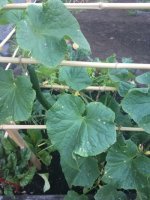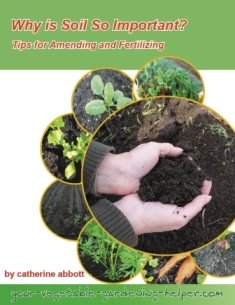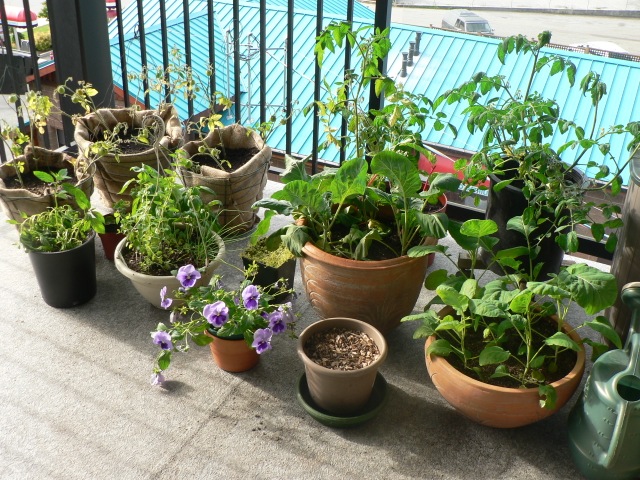Disease Control in your
Vegetable Garden
Gardening enthusiasts often face the challenge of maintaining healthy vegetable gardens. Disease can spread rapidly and devastate crops, reducing yields and even killing plants. Effective disease control involves a combination of cultural practices, monitoring, and, when necessary, the use of chemical controls. Here’s a detailed guide to managing diseases in your vegetable garden.
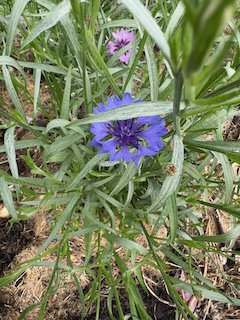
Understanding Plant Disease:
Plant diseases in vegetable gardens can be caused by various pathogens, including fungi, bacteria, viruses, and nematodes. These pathogens can be soil-borne, airborne, or waterborne and can infect plants at any growth stage. Common signs of disease include discoloration, wilting, stunted growth, and abnormal tissue growth.
Monitoring and Early Detection:
Regularly inspect plants for signs of disease. Early detection is crucial for effective management.
Look for symptoms such as:
• Leaf spots or blotches
• Wilting or yellowing leaves
• Unusual growths or deformities
• Mold or mildew on leaves and stems
List of some common diseases in my garden:
One of the best preventions is to learn how to identify each, the damage they do, susceptible vegetables, and then you can find ways to prevent the problem in future seasons.
- Dampening off - affects young seedlings - signs are plants die off and have weak whitish stems. I usually had to re seed and make sure I do not over water.
- White mold - affects seedlings - develops on the surface of wet potting soil. It is usually not harmful but may indicate over watering and/or poor air circulation.
- Late blight - affects tomatoes - signs are black spots on leaves and fruit. Once you see blight take off affected leaves and fruit and put in the the garbage, not your compost. Blight can destroy plants very quickly. I live on the west coast and usually grow my tomatoes under cover now so the leaves do not get wet.
- Clubroot - affects brassicas, root crops - signs are misshapen roots, wilting leaves, poor growth. Can live in the soil for many years so rotating your crops is important. Another way to keep this at bay is to make sure your soil has a good pH. Most veggie plants grow best with pH of 6-6.5
- Powdery mildew- affects squash, zucchini, cucumbers - is a fungal disease and easy to identify. Infected plants display white powdery spots on the leaves and stems. Usually not harmful to the plant just not very attractive looking. I have cut off damaged leaves and make sure the plants have good air circulation around them.
- Scab - affects potatoes - scab like growth are found on the potatoes. Not attractive to look at and potatoes need to be peeled to eat them. Do not lime the area where you grow potatoes as they prefer a more acidic soil.
- Downy mildew - affects the foliage of cucumber, squash -caused by a fungus-like organism. It is spread from plant to plant by airborne spores. It is a disease of wet weather as infection is favoured by prolonged leaf wetness. Not usually harmful to the fruits. Pick off damaged leaves and put them in the garbage not your compost.
Practices for Disease Control & Prevention:
1. Crop Rotation:
• Rotate crops annually to prevent the buildup of pathogens in the soil. Avoid planting the same family of vegetables in the same spot year after year.
2. Proper Spacing:
• Ensure adequate spacing between plants to promote air circulation, which helps reduce humidity levels that favor disease development.
3. Water Management:
• Water plants at the base rather than overhead to keep foliage dry. Water early in the day to allow leaves to dry before nightfall.
4. Soil Health:
• Maintain healthy soil with organic matter and proper pH levels. Healthy soil supports strong plant growth and reduces susceptibility to disease.
5. Sanitation:
• Remove and destroy diseased plant debris. Clean gardening tools regularly to prevent the spread of pathogens.
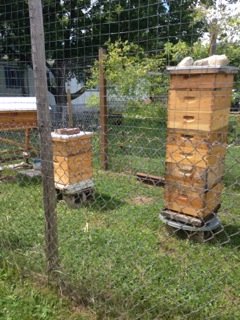 Bees are a benefical insect
Bees are a benefical insectEncouraging beneficials into your garden is also very helpful:
One other practice is to attract beneficial bugs and insects to your garden. Provide safety in a place for them to live, have some kind of water feature or bath for them to use and provide food by planting beneficial flowers
- Birds – place bird house, feeders, water bowls; protect berries and fruits with netting.
- Bats – bat house, flattened bird house with an entrance slot on the bottom
- Toads – provide water and shelter with an upside down clay flower pot with holes chipped out on the sides for an entrance. The eat slugs.
- Snakes – pile rocks and sticks leaving room for snakes to enter. They eat slugs, snails, and insects.
Beneficial animals:
- Braconid wasps
- Earthworms
- Ground beetles
- Honeybees
- Ichneumon wasps
- Lacewings
- Lady bugs (ladybird beetles)
- Praying mantises
- Robber flies
- Spiders
- Syrphid flies
- Tachind flies
- Yellow jackets (hornets)
Beneficial insects:
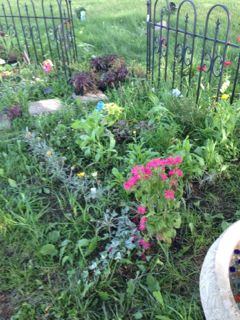 Flowers are a great addition to a veggie garden
Flowers are a great addition to a veggie garden- Marigolds
- Calendula
- Sunflower
- California poppy
- Flowers of dill, parsley
- Lemon balm
- Flowers of broccoli and celery
- Nasturtiums
Beneficial flowers:
Check out animal pests and insects for a list of common animal pests and insects that can cause damage to your vegetables.
Conclusion
Effective disease control in vegetable gardens requires a proactive and integrated approach. By combining good cultural practices, regular monitoring, biological controls, and, when necessary, chemical treatments, gardeners can maintain healthy, productive gardens. Remember, prevention is always better than cure, so focus on creating an environment that supports plant health and minimizes disease risks. Learn more strategies for pest control in your vegetable garden.
Return from Disease to Garden Pest Control
Recent Articles
-
Vegetable Gardening Frustrations: Lessons for a Better Harvest
Oct 29, 24 07:37 PM
Every vegetable gardener knows that while the rewards are sweet, the vegetable gardening frustrations can be a bit bitter. -
Small Space Vegetable Gardening
Sep 23, 24 05:06 PM
Small Space Vegetable Gardening - Tips for growing vegetables in small spaces. -
Why Fall Gardening?
Aug 16, 24 12:24 PM
Fall Gardening: A guide to a Bountiful Harvest.
